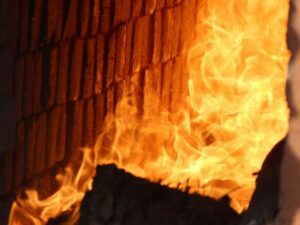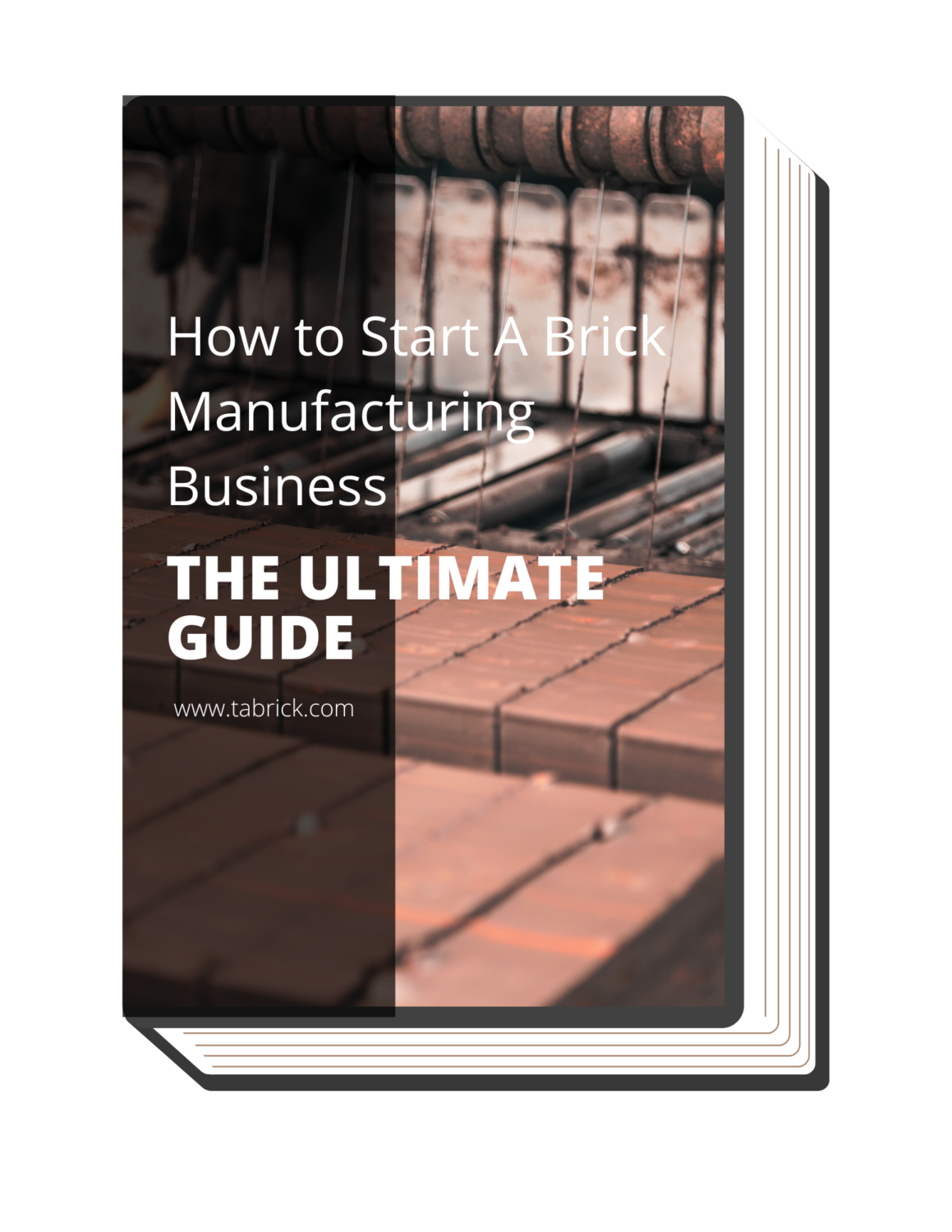Are you a business owner wondering how a simple brick builds your strongest establishment?
The process transforms raw materials into the sturdy bricks used in construction globally.
As an expert in this industry, I bring a wealth of knowledge and experience into this discussion.
My insights are rooted in hands-on practice and continuous engagement with technological advancements in this field.
The brick manufacturing process is often perceived as a straightforward process. But it actually involves a series of complex and finely tuned steps.
In this guide, we will delve into the 6 steps of the brick manufacturing process, offering a comprehensive look at how raw materials are transformed into the bricks that build our world.
Read on to uncover the art behind brick making.
1. Step#1 Raw Material Procurement and Preparation
To begin the brick manufacturing process, the right raw materials must be procured and prepared with precision. This stage sets the foundation for the quality of the final product. Let’s explore how to do it:
- Identify Suitable Material Sources: The first step involves locating and identifying suitable sand sources. High-quality sand is essential as it is the primary composition for brick manufacturing. The chosen sand should have the right mineral composition to ensure it can be molded effectively.
- Testing for Quality and Composition: Once a potential sand source is identified, strict testing is conducted. For example, the shrinkage rate and impurity content are crucial in assessing the clay’s quality. This testing determines the clay’s suitability by analyzing its chemical and physical properties.
- Extraction and Transportation: Following quality approval, the clay is extracted using methods like digging or dredging, ensuring minimal environmental impact. After extraction, the clay is transported to the manufacturing site. Considering factors like distance, volume of material, and environmental considerations.
- Initial Processing and Storage: Upon arrival at the manufacturing site, the clay undergoes initial processing. This process includes removing impurities and blending different clay types. The prepared clay is then stored in a controlled environment to maintain its quality until it’s ready for the next step.
|
Raw Material
|
Source
|
Notes
|
| Clay |
Natural deposits |
Primary raw material for bricks. Should have proper composition and moisture content. |
| Sand |
Riverbanks, quarries, or pits |
Mixed with clay to improve plasticity and reduce shrinkage during firing. |
| Water |
Local water sources |
Used for mixing with clay and sand to create a workable clay mixture (slurry). |
| Coal or Biomass Fuel |
Coal mines, forests, or farms |
Used for firing bricks in kilns. The choice between coal or biomass depends on cost and availability. |
| Additives (if needed) |
Suppliers or manufacturers |
Can include stabilizers, colorants, or other additives to enhance brick properties. |
| Recycled Materials |
Construction sites or recycling centers |
Can include crushed bricks, fly ash, or other recycled materials for sustainability. |
2. Step#2 Molding and Shaping
After the raw materials are procured and prepared, the next crucial phase is molding and shaping the clay into bricks. This step is where the raw clay begins to take on its familiar form. Here are the key steps involved:
- Selecting the Molding Technique: There are various molding techniques, including hand molding and machine molding. The choice depends on factors like desired texture, size, and production volume. Tabrick offers brick making machines that cater to different molding techniques, ensuring efficiency in the production of Brick Material.
- Preparation of the Clay: Before molding, the clay is further processed to attain the right consistency. It’s mixed with water and sometimes additives to enhance certain properties. The clay is then kneaded to remove air pockets, ensuring uniformity in density, which is crucial for the strength of the brick.
- Shaping the Bricks: The prepared clay is then shaped into bricks. In machine molding and extrusion, specialized equipment shapes and cuts the clay. Tabrick’s brick making machines ensure that the size and dimensions are carefully controlled to meet specific standards and requirements.
3. Step#3 Drying Process
After the bricks are molded and shaped, they undergo the drying process, a critical step to ensure their durability and structural integrity. Here are the steps involved in the drying process:
- Arrangement for Air Drying: The first step is to arrange the shaped bricks in an open space where they can air dry. This is usually done in rows or stacks with gaps between each brick to allow air circulation. The arrangement is crucial to ensure to prevent the bricks from cracking due to uneven moisture loss.
- Controlled Drying: Once the bricks have lost a significant amount of moisture naturally, they are moved to a controlled drying environment. This environment, often a drying chamber, allows for a more regulated drying process. The temperature and humidity levels are controlled to ensure uniform drying of the bricks.
- Monitor and Adjust: During the drying process, the moisture content of the bricks is continually monitored. Adjustments are made to the drying environment, such as modifying the temperature or to ensure the bricks dry evenly. This monitoring is crucial to prevent defects that can arise from uneven or excessive drying.
- Quality Check: Once the bricks have reached the optimal moisture content, they are removed from the drying environment. A final quality check is conducted to ensure that the bricks are uniformly dried and free from cracks or other defects. After passing this check, the bricks are ready for the next stage.

4. Step#4 Firing the Bricks
After the bricks have been dried, they are ready for the most transformative step: firing. This process hardens the bricks and gives them their final strength and durability. Here are the steps involved in firing the bricks:
- Loading the Kiln: The first step in the firing process is to load the dried bricks into the kiln. This is done carefully to ensure even distribution of heat during the firing process. The bricks are stacked with precise gaps between them to allow for air circulation and uniform heat distribution.
- Increasing the Temperature: Once the kiln is loaded, the temperature is gradually increased. According to Science Direct, the firing temperature is based on the clay type and desired properties, ranging between 900 to 1200°C. This must be done slowly to prevent the bricks from cracking due to thermal shock.
- Maintain and Monitor Temperature: The bricks are then held at the firing temperature for a specific time. During this period, the temperature and kiln atmosphere are closely monitored to ensure uniform heat treatment. This stage is crucial for developing the final strength and color of the bricks.
- Cooling Down: After the firing is complete, the kiln is allowed to cool down slowly. Rapid cooling can cause cracking or warping in the bricks. The cooling process is as important as the heating phase and can take as long as the firing itself, depending on the size of the kiln and the type of bricks.

5. Step#5 Quality Control and Testing
After the bricks are fired, they undergo a crucial phase of quality control and testing to ensure that the bricks are suitable for construction use. Here are the key steps in the quality control and testing process:
- Visual Inspection: The first step is a visual inspection of the bricks. According to Grand View Research, is expected to grow at a CAGR of 3.1% by 2030. Highlighlight the importance of checking bricks with visible defects, such as cracks or uneven edges. This step ensures that only structurally sound bricks proceed to further testing.
- Dimensional Accuracy Test: The bricks are then measured for dimensional accuracy. This test checks whether the bricks conform to specified dimensions and tolerances. Dimensional accuracy is crucial for ensuring that the bricks fit together correctly in construction, providing structural integrity.
- Compressive Strength Test: This test determines the load-bearing capacity of the bricks. A hydraulic press is used to apply pressure to the brick until it cracks or breaks. The strength of the brick is measured in terms of the pressure it can carry, which ensures the safety of structures built with these bricks.
- Absorption Test: Finally, this test involves weighing the brick, soaking it in water for a specific period, and then weighing it again to determine how much water it has absorbed. For instance, low water absorption bricks are used in exteriors, as it impacts the brick’s durability, especially in varying weather conditions.

6. Step#6 Cooling, Storage and Transportation
After quality control and testing, the final step in the brick manufacturing process is cooling and storage. This stage ensures the bricks are ready for transportation and use. Here are the key steps in cooling and storage:
- Controlled Cooling: Post-firing, the bricks need to be cooled down slowly to room temperature. This is usually done in the kiln itself or in a designated cooling area. Controlled cooling prevents the bricks from developing thermal stress, which can lead to cracking or warping.
- Inspection Post-Cooling: Once the bricks have cooled, a final inspection is conducted. This check ensures that no defects have developed during the cooling process. Bricks that pass this inspection are then cleared for storage and distribution.
- Organized Storage: Bricks are then moved to storage areas, where they are organized for easy access and distribution. Proper storage involves stacking the bricks in a stable manner to prevent damage and arranging them in a way that makes it easy to count and retrieve specific quantities as needed.
- Preparation for Transportation: Finally, good bricks are prepared for transportation to construction sites or retailers. This involves packaging or loading them onto pallets, ensuring they are secure for transit. The packaging is designed to protect the bricks from damage and weather elements during transportation.

Conclusion
The brick manufacturing process is a detailed journey from raw material acquiring to the final storage, each step crucial in ensuring the quality and durability of the bricks. This guide provides valuable insights, helping businesses understand the intricacies involved in producing top-quality bricks.
For businesses seeking state-of-the-art brick making machines, Tabrick offers the latest technology and expertise. To learn more about our solutions, please contact us.




